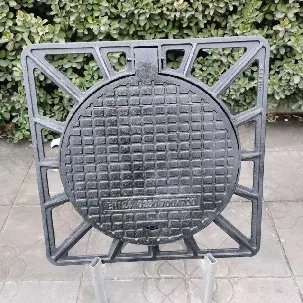mixproof butterfly valve
Understanding Mixproof Butterfly Valves
Mixproof butterfly valves are essential components in various industries, particularly in food processing, pharmaceuticals, and chemical manufacturing. These valves play a crucial role in ensuring the separation of different media during production processes, thus guaranteeing product integrity and safety. In this article, we will explore the benefits, design principles, and applications of mixproof butterfly valves.
What is a Mixproof Butterfly Valve?
A mixproof butterfly valve is a specially designed valve that allows for the simultaneous flow of two different media without the risk of cross-contamination. The design typically features two independent sealing systems that prevent the mixing of fluids. This capability is particularly important in industries where hygiene and product purity are paramount. For instance, in food production, preventing the contamination of edible products with cleaning agents or other substances is critical.
Key Features and Benefits
1. Separation of Media The primary advantage of mixproof butterfly valves is their ability to separate two different fluids. This feature is essential for processes that require strict compliance with health and safety regulations.
2. Compact Design The valve's compact design minimizes space requirements in piping systems, making it easier to fit into existing infrastructures without significant modifications.
3. Easy Operation Mixproof butterfly valves are mechanically simple and can be operated manually or automatically. This versatility allows for convenient integration into automated systems, enhancing overall efficiency.
mixproof butterfly valve

4. Cost-Effective Due to their design and functionality, these valves can lead to cost savings in both maintenance and operational expenses. Reducing the likelihood of cross-contamination decreases the need for extensive cleaning procedures and potential product recalls.
5. Durability and Reliability Constructed from high-quality materials, mixproof butterfly valves are built to withstand harsh conditions, including high pressures and corrosive substances. Their reliability ensures long-term operation and minimizes downtime.
Applications
Mixproof butterfly valves find a wide range of applications across various sectors. In the food industry, they are commonly used for transferring ingredients, such as juices, syrups, and sauces, where cross-contamination could compromise product quality. In the pharmaceutical sector, these valves are vital in processes involving active pharmaceutical ingredients (APIs) and excipients, where even trace contamination can have significant repercussions.
In chemical manufacturing, mixproof butterfly valves facilitate the safe transport of reactive or hazardous substances, ensuring that production processes remain efficient and safe. Additionally, they are employed in water treatment plants, where they help manage different water streams without the risk of undesirable mixing.
Conclusion
In conclusion, mixproof butterfly valves are indispensable tools that enhance the efficiency, safety, and reliability of fluid handling processes across various industries. By ensuring the separation of different media, they help maintain product integrity, comply with safety regulations, and reduce operational costs. As industries continue to evolve and demand higher standards of hygiene and safety, the importance of mixproof butterfly valves will undoubtedly grow, making them a worthy investment for any operation concerned with minimizing contamination risks.
-
The Essential Component for Safe Urban InfrastructureNewsMay.14,2025
-
The Backbone of Urban InfrastructureNewsMay.14,2025
-
Practical and Stylish Solutions for Your Drainage NeedsNewsMay.14,2025
-
Lamphole Frame and Cover: Essential for Urban InfrastructureNewsMay.14,2025
-
A Seamless and Aesthetic SolutionNewsMay.14,2025
-
A Must-Have for Safety and DurabilityNewsMay.14,2025
-
Pipe Repair Clamps: Your Ultimate Solution for Efficient RepairsNewsMay.09,2025
